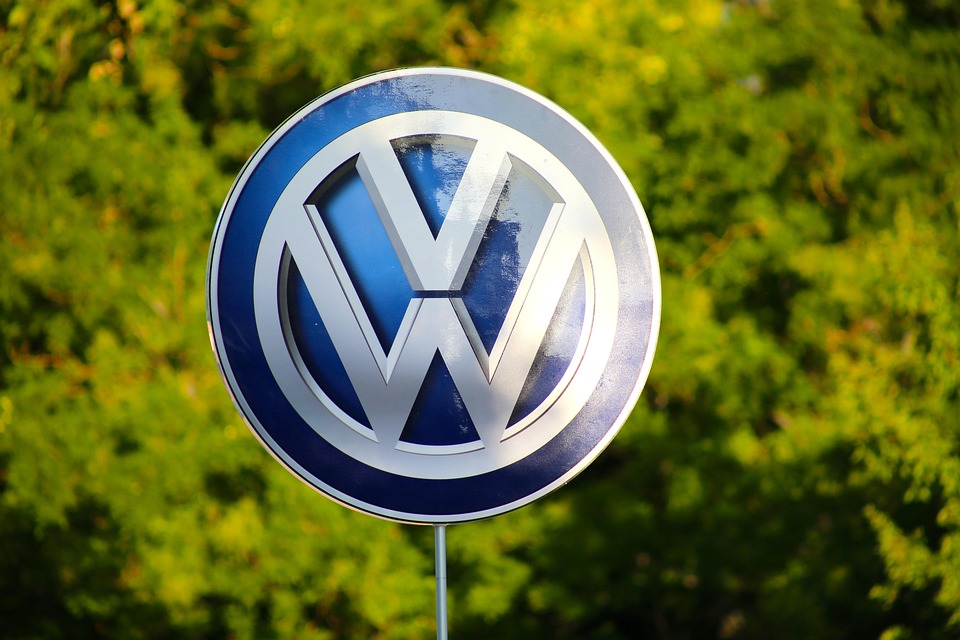Racing Ahead: The Competitive Strategies of Leading Automotive Brands in 2023
Introduction
The automotive industry in 2023 is undergoing a significant transformation. Accelerated by technological advancements, shifting consumer preferences, and the urgency to address climate change, leading automotive brands are racing ahead with inventive strategies to maintain their competitive edge. This article explores the various dimensions of these strategies, including electrification, digitalization, sustainability, and global market positioning.
The Electrification Revolution
1. Emphasis on Electric Vehicles (EVs)
In 2023, a substantial number of automotive brands have pivoted towards electric mobility as a core component of their business strategies. The motivations are multifaceted, stemming from stringent regulatory pressures to reduce carbon emissions, consumer demand for sustainable options, and advancements in battery technologies. Leading brands such as Tesla, GM, Ford, and Volkswagen have made bold commitments to transition their fleets to electric-only vehicles within the next decade.
2. Investment in Battery Technology
The heart of any EV is its battery, and automakers are pouring billions into research and development to improve energy density, reduce costs, and enhance charging speeds. For example, Tesla has been at the forefront of developing its 4680 battery cells, which promise to provide better performance at a lower cost. Similarly, General Motors is investing in next-generation battery technology through partnerships with startups and established producers. The focus extends to establishing domestic supply chains to mitigate risks associated with raw material sourcing, particularly lithium, cobalt, and nickel.
3. Charging Infrastructure
Simultaneously, leading brands recognize that for EV adoption to accelerate, robust charging networks must be developed. Companies like ChargePoint and Electrify America have partnered with automotive brands to expand the charging infrastructure. Notably, Tesla’s Supercharger network now aims to evolve into a more open platform to accelerate overall EV growth, giving it a competitive advantage.
Digital Transformation
1. Advancing Connectivity
The rise of connected vehicles in 2023 has propelled automakers to enhance the integration of technologies like 5G and IoT to offer improved features and services. Brands such as BMW and Audi are embedding Artificial Intelligence (AI) to create more intuitive user experiences. Features like predictive maintenance, real-time traffic updates, and convenience applications are anticipating consumer needs more accurately.
2. Data as a Competitive Asset
As vehicles become more connected, the volume of data generated is staggering. Automotive brands view this data not just for operational efficiency but as a vital competitive asset. Organizations are leveraging customer data to develop personalized experiences, targeting marketing campaigns more effectively. Mercedes-Benz, for example, is utilizing customer data to enhance its mobility services and predict future consumer trends.
3. Software-Defined Vehicles
In 2023, the notion of cars as software-defined platforms has gained traction. Automakers are increasingly adopting over-the-air (OTA) updates to provide security enhancements and new features without requiring physical dealership visits. This model not only boosts customer satisfaction but also creates new revenue streams through subscriptions for advanced features, as seen with Tesla and Ford’s BlueCruise.
Sustainability and Corporate Responsibility
1. Sustainable Manufacturing Processes
With a growing consumer base prioritizing sustainability, automotive brands are reevaluating their manufacturing processes. Leading players are committing to more transparent and ethical supply chains. Ford, for example, has committed to using 100% renewable energy in its manufacturing facilities by 2035. Moreover, firms are exploring circular economy principles, investing in processes to recycle materials and reduce waste.
2. Carbon Neutrality Goals
Many brands have set ambitious targets for carbon neutrality. BMW aims to achieve carbon neutrality by 2050, with several interim goals set for the coming years. Similarly, companies like Ford and General Motors have pledged to reach carbon neutrality globally by 2040. These long-term strategies are not merely branding exercises; they compel companies to innovate and rethink their operational architectures comprehensively.
3. Community Engagement and Development
Beyond environmental sustainability, leading brands are increasingly focusing on social sustainability. This includes investing in local communities by providing educational opportunities, workforce training, and supporting local economies. Toyota’s initiatives to create mobility solutions for underserved communities exemplify this trend, positioning the brand as not just an automaker but a responsible corporate citizen.
Global Market Positioning and Adaptation
1. Navigating Global Markets
In 2023, the competitive landscape is increasingly global. Automakers must adapt to diverse consumer preferences, regulatory landscapes, and economic conditions. For example, brands like Hyundai are tailoring their offerings in emerging markets, where affordability and practicality are paramount, while simultaneously innovating and investing in high-end technologies in established markets like Europe and North America.
2. Strategic Partnerships and Alliances
Navigating this complex environment has led to a rise in strategic partnerships. Companies are joining forces to pool resources for R&D, share technology, and even co-develop vehicles. For instance, Ford and Volkswagen’s alliance on EVs and self-driving technology showcases how competition is becoming more collaborative, ultimately benefiting consumers through faster innovation cycles.
3. Adapting to Regulatory Changes
Regulatory frameworks are prompting automotive brands to stay ahead of evolving standards. The European Union is implementing stringent emissions regulations, which necessitate swift responses from automakers. Brands less attuned to these shifts may struggle; for example, a late pivot to EV production could jeopardize market positioning in regions prioritizing electrification.
Consumer Centricity and Experience
1. Tailoring Products to Consumer Preferences
As tastes evolve rapidly, leading automotive brands are emphasizing consumer insights to drive their product development processes. Brands like Tesla are leveraging customer feedback loops to make iterative adjustments to their designs and features. Additionally, manufacturers are exploring user experience elements—ranging from infotainment systems to vehicle aesthetics to ensure they resonate with their target demographics.
2. Enhancing Customer Experience
The shift towards customer-centric retail experiences has never been more pronounced. Many brands are investing in immersive online and offline experiences, including augmented reality (AR) and virtual reality (VR) platforms, to enhance the customer journey. These innovative approaches not only facilitate engagement but also enable consumers to visualize and experience products before making a purchase decision.
3. Customer Loyalty Programs and Ecosystems
Automakers are increasingly adopting loyalty programs designed to retain customers and enhance brand loyalty. By creating ecosystems that include services like maintenance, charging, and insurance, companies aim to ensure that customers remain engaged with their brands long after the purchase is made. Nissan’s "Nissan Intelligent Mobility" initiative is an example of how brands are aiming to provide a 360-degree customer experience that goes beyond the vehicle itself.
Challenges and Future Outlook
1. Supply Chain Disruptions
Despite the enthusiasm for electrification and technological advancement, global supply chain disruptions remain a significant challenge. Companies are grappling with semiconductor shortages and raw material constraints, which have forced automakers to rethink their supply chain strategies. This realignment includes diversifying suppliers and considering localized manufacturing solutions.
2. Innovative Business Models
As the landscape evolves, traditional ownership models are being challenged. Car-sharing and subscription models are gaining traction, appealing to younger consumers who prioritize flexibility. Automotive startups like Rivian and Canoo are leveraging these new business models, disrupting the longstanding ownership paradigm and inviting established players to adapt their strategies accordingly.
3. Future of Automation
Autonomous driving technologies continue to evolve, with various brands racing towards full autonomy. However, significant technical and regulatory hurdles must be overcome before widespread adoption. Companies, such as Tesla and Waymo, are investing heavily in this area, developing robust platforms that may redefine transportation in the coming years.
Conclusion
The competitive landscape of the automotive industry in 2023 is defined by an intricate interplay of electrification, digitalization, sustainability, and consumer-centric strategies. Leading automotive brands are not only racing ahead in technological innovation but also adapting to changes in consumer behavior and global market dynamics. As firms navigate the challenges posed by supply chain disruptions and shifting regulatory frameworks, their ability to innovate and embrace new business models will likely dictate their future success. The road ahead may be fraught with challenges, but for those equipped with the right strategies and foresight, the journey is set to be thrilling.
Footnotes
- Tesla, “Battery Day Announcement,” 2023. Tesla.com.
- General Motors, “Future of GM,” 2023. Gm.com.
- Ford Motor Company, “Sustainable Manufacturing,” 2023. Ford.com.
- BMW Group, “Carbon Neutrality Goals,” 2023. BMW.com.
- Volkswagen, “EV Strategy,” 2023. Volkswagen.com.
- Audi, “Connected Vehicles,” 2023. Audi.com.
- ChargePoint, “Charging Network Partnerships,” 2023. ChargePoint.com.
- Daimler AG, “Data Utilization,” 2023. Daimler.com.
- Hyundai Motor Company, “Emerging Markets,” 2023. Hyundai.com.
- Rivian, “New Business Models,” 2023. Rivian.com.
This comprehensive exploration of the automotive industry’s competitive strategies in 2023 outlines how leading brands are adapting and innovating to maintain relevance in a rapidly changing landscape. If you would like specific sections expanded or if you have other requests, please let me know!


























Add Comment